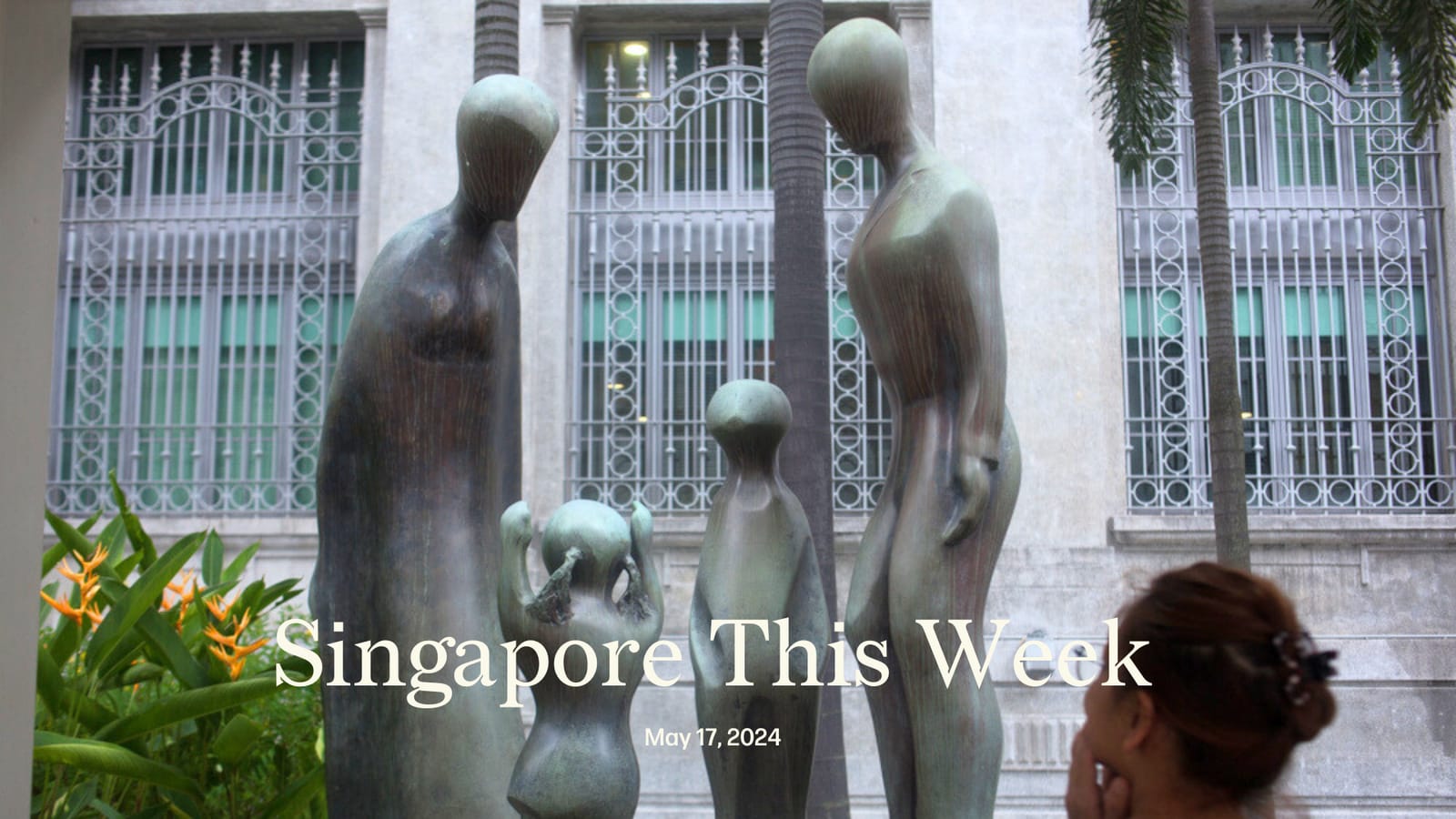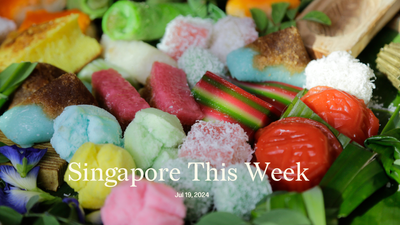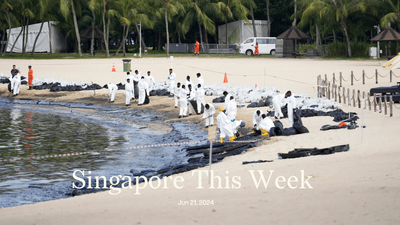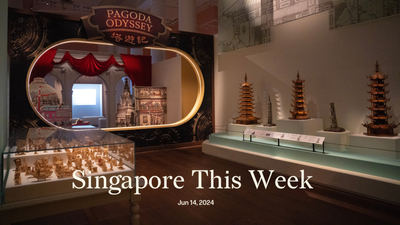Politics: Chan and Shan miss out on DPM in a very Christian cabinet
There’s been much fanfare about Lawrence Wong succeeding Lee Hsien Loong to become Singapore’s fourth prime minister. Our essay of the week, “Lee Hsien Loong’s mixed legacy”, examines the 20-year rule of Lee Kuan Yew’s oldest child. Jom had previously written about Wong’s unconventional credentials for the job, and the potential for him to be a transformative leader. One revelation this week concerns two people Wong overlooked for deputy prime minister. Chan Chun Sing, now education minister, was in 2018 designated as likely second in command to Heng Swee Keat, then the party’s choice for next leader. Heng changed his mind in 2021, paving the way for Wong’s ascent. Since then, Chan’s star has fallen. By all accounts a highly competent administrator, Chan is prone to public gaffes—he once said that cotton comes from sheep. He’s also often unable to contend with knotty political issues, most recently the teaching of Israel’s war on Gaza in Singaporean classrooms. Perhaps Chan was also sidelined because he, along with Ong Ye Kung, health minister, represent the clearest threats to Wong. (They’re believed to have more established internal party bases than the new prime minister.)
Liberals will breathe a sigh of relief that another potential candidate, K Shanmugam, the powerful home affairs and law minister, was also not made deputy. “Shan” has been the architect of many of the more draconian laws passed by the ruling People’s Action Party, including amendments to the Maintenance of Religious Harmony Act and the Protection from Online Falsehoods and Manipulation Act (POFMA). Wong instead picked Heng and Gan Kim Yong as his deputies. Gan led Singapore’s Covid-19 response along with Wong, which is when the latter rose to prominence in the public eye. Gan, Heng, and Wong represent a trio of geeky, mild-mannered Chinese men. Analysts will look out for any tussles with the more apparent political animals, including Chan and Shan.
The other dynamic is that Wong is Singapore’s first-ever Christian prime minister in a very Christian cabinet, likely far above their 19 percent representation in Singapore. (Unlike Gan and Wong, not all politicians speak openly about their beliefs.) Politicians of all stripes have in the past not really understood the separation of church and state, as Jom has argued. With a raft of progressive demands on the table, including greater rights for single mums and queer Singaporeans, it’ll be up to Wong to make clear his stance. He may prefer battling Chan and Shan to God.
Society: Bringing down the hammer on MCs
Telemedicine providers are under scrutiny after the Ministry of Health (MOH) put out a circular criticising the egregious issuance of medical certificates (MCs). According to the circular, “various employers and government agencies” allege that workers and students are being granted MCs without proper assessment, enabling “malingering”. To prevent this, the circular advises doctors to arrange for in-person assessments of doubtful cases. The circular does not detail just how widespread the problem is. Are hordes of MC-waving Singapore workers sneaking into JB for a naughty Monday getaway?
The truth is that transient ailments seldom have root causes or require doctors to excavate family medical history. Anyone who has awoken with a throbbing headache, debilitating period pain or an upset stomach after an unadvisedly indulgent dinner can attest to that. Under such circumstances any consultation, tele or otherwise, has to proceed in good faith. The MOH circular, with its ominous warning about “inspection, audits” undercuts that, and injects a dose of fear and suspicion into the doctor-patient relationship. The animated discussion this has provoked is also a reminder of the transactional, if not adversarial, relationship between employers and labour in Singapore, where a frequently pro-business state plays mediator. Often, this elides an examination of possible structural issues. For instance, have the complainants interrogated the role their own work cultures and practices may have played in encouraging absenteeism?
Those who want to avoid work, will. “There is indeed a tiny minority that considers sick leave as part of their annual leave, but this attitude towards work shows up in their performance anyway, so for us it’s a non-issue,” the director of a small and medium enterprise told Jom. It should be even less of an issue when one considers the results of a 2022 Milieu Insights survey. The vast majority of respondents—including 77 percent from Singapore—said they take fewer days of sick leave than necessary because they have too much work, may miss out on important decisions or simply because they feel “bad” (read: guilty). Only 11 percent of those surveyed here said their companies provide mental wellness leave. The very idea of adults needing a certificate to prove they have the sniffles is ludicrous. Given the survey’s results, MOH should instead use this opportunity to cultivate trust in the workplace and ease Singapore firms away from such infantilising practices. It’s time to pull the plug on MCs.
Society: Easing the weight of divorce
In Singapore, married couples can file for divorce on the grounds of adultery, unreasonable behaviour, desertion or separation. But from July 1st, they’ll also be able to cite mutual agreement as a reason for wanting to legally end their civil union if both parties agree that their marriage has broken down irretrievably. To support their wish to split, wife and husband must give reasons why their marriage has irretrievably broken down, and also show that they’ve made efforts to reconcile. If the court isn’t convinced by the latter, and believes that there is a reasonable possibility of reconciliation, it can reject an agreement to file for divorce. If parents, the parties will also need to submit considerations as to the arrangements to be made in relation to their children and financial affairs.
The Ministry of Social and Family Development (MSF) first proposed this amendment to the Women’s Charter in 2022. Enacted in 1961, the Charter has been a key piece of legislation, institutionalising the rights and responsibilities of men and women in marriage. Based on feedback gathered from engaging some 150 divorcees and other stakeholders on the divorce process, MSF surmised the need to strengthen therapeutic justice, or the “lens of care”. Sun Xueling, minister of state for social and family development, had said that the amendment aims to reduce acrimony and better allow the family to heal and move on. The Association of Women for Action and Research, who has long “advocated for no-fault divorce”, welcomed the change.
Divorce takes a toll on all involved: establishing the current grounds for ending a marriage has resulted in much finger-pointing, contention, as well as messy and expensive court battles, causing mental, emotional and financial distress. Children often become embroiled in their parents’ disputes too, invariably sucked into the fog of blame and accusations. This can leave a lasting impact on the child’s mental health and their familial relationships. Mutual agreement divorces won’t magically erase the pain and grief when a marriage is dissolved. But it can surely make the process less bitter and ugly, and hence the path to resolution smoother and more amicable.
History weekly by Faris Joraimi
The Harbourfront and Marina South cruise terminals will be consolidated to clear up land for the “Greater Southern Waterfront” (GSW) master plan, said the Urban Redevelopment Authority this week. First announced in 2019, the GSW includes a continuous waterfront promenade stretching from Pasir Panjang to Marina East, as well as residential and recreational areas. A heritage assessment survey will preserve some of this historic shoreline’s significant landmarks. I’m always in favour of coasts being accessible to everyone, and with the Keppel, Tanjong Pagar and Brani shipping terminals set to also move to Tuas by 2027 for the GSW, this looks set to become reality.
The idea that waterfronts should be a public commons has inspired the reservation of the Lake Michigan shore in Chicago as a public park, as well as our own East Coast Park (ECP). Soon the “Long Island” project will obstruct the open sea views so essential to ECP’s character, so the GSW feels like token consolation. The Planners giveth and taketh. Removing all shipping terminals from the southern coast also ends an over-five-hundred-year maritime history there. What the British named “Keppel Harbour”, the short and narrow channel between Sentosa and Harbourfront, was known to European navigators as the “old straits” (Portuguese: estreito velho) of Singapore. According to historian Peter Borschberg, vessels would wait at the channel’s entrance for days before the right tidal and wind changes carried them in. Reefs, boulders and rocks made it dangerous, while tree branches on both sides were so large they would scrape the hulls and sails passing through.
How did the Europeans traverse this perilous passage? They were helped by the Orang Selat (“People of the Straits”). “Malays known as saletes”, recorded the Italian voyager Giovanni Careri in 1695, “live along this channel in numerous floating and portable homes”, supplying the sailors with fish in return for iron, tobacco and knives. The Orang Selat guided ships to safety by burning tree resins in coconut shells, floating on the water to mark out dangerous features. Globe-spanning connections, therefore, have often relied on the authority of local presence, practices and knowledge.
Arts: Surge pricing for peak concerts? ‘Say no to this! No! No!’
Local fans of the hit musical “Hamilton” and Icelandic jazz-pop singer Laufey discovered that the foes they faced for their seats weren’t just ticket scalpers—but newly introduced dynamic pricing. Similar to the surge pricing structures in ride-hailing and food delivery services, which permit fluctuations based on demand and other factors like the weather, dynamic pricing is creeping into the entertainment business. To deter scalpers, say ticketing platforms such as Live Nation’s Ticketmaster. “Blah, blah, blah,” say fans. “[S]urprise, Ticketmaster IS the scalper,” user Purpledragon84 wrote on a heated Reddit thread discussing the news. As it is, frustrated fans must navigate complicated presale registrations and brave crashing websites only to be thwarted by bots, scalpers, and now algorithms that inflate already exorbitant ticket prices. Walter Theseira, economics professor, told TODAY that dynamic pricing models should “be transparent to consumers so that people can understand how prices are affected”. But it’s more likely that companies will be perceived as maximising profits at the expense of concertgoers, according to marketing professor Hannah Chang. The same grouses have beset South Korea’s K-pop industry. Music critic Kim Heon-sik told The Korea Herald: “K-pop is essentially run by the fandom. Dynamic pricing benefits the company and artists by taking more from the fans, forcing fans to show their love for the artists by paying more.” The Ministry of Trade and Industry and the Consumers Association of Singapore have said they will monitor the impact of dynamic pricing on the concert industry, but fans aren’t convinced. Some are arguing that the Japanese concert lottery system might in fact be a fairer way to go. Japan’s tightly regulated system may get even more so, with the government’s Digital Agency testing the use of personal identification cards as part of a broader national plan to increase security and decrease scalping. If striking the lottery feels like a fairer way of winning the ticketing battle in this topsy-turvy new world, you just might have to throw away your shot. Ticketers, history has its eyes on you.
Arts: Curiouser and curiouser with Olafur Eliasson
Artist-activist-academic and all-around Renaissance Man? Or a clever conjurer of greenwashing gimmickry? Olafur Eliasson is likely all of these things, and his blockbuster show at the Singapore Art Museum is spectacular, sensorial, and super palatable for anyone hoping to consume art and sate a bit of climate crisis guilt at the same time. “Your curious journey” continues in the dramatically atmospheric and doggedly ecological vein of his three decades of work: you can walk through a fine curtain of mist as refracted rainbows of light shimmer around you (“Beauty”), bask in the jaundiced glow of monofrequency light (“Yellow corridor”), and come face to face with a wall carpeted in a dense filigree of reindeer moss that fades, then expands with every watering (“Moss wall”). Running till September, this marks Eliasson’s first major solo show in South-east Asia, featuring plenty of merch and some “Singapore-exclusive” works; one of them encourages the visitor to go on a SimCity-type bender with all-white Legos (“The cubic structural evolution project”). A wry dig at our manicured, Le Corbusier-lite landscape? Who knows.
The Icelandic Danish artist often positions the viewer as a co-creator, one whose perception of the environment completes the spectatorial experience. We’re seduced by the theatre of his deceptively simple installations that activate so many of the senses: they’re tactile, sonic, olfactory—and always visually saturating. Eliasson is astral in his reach, bathing the Tate Modern’s Turbine Hall in the glimmer of an artificial sun, but also dispatching little suns across continents for a solar-powered energy project. He’s an artist with a massive aesthetic footprint who’s also very publicly trying to reduce his environmental one, which often lands him in the crosshairs of criticism. In his seminal “Ice Watch” (2014), he transported 30 hunks of glacial ice cast off from a Greenland ice sheet to various urban public centres, including Copenhagen, London and Paris, where they melted slowly into the pavement. Julie’s Bicycle, an arts and environmental non-profit, found that the project “produced the same emissions as flying 30 people to Greenland to see the fjord itself...far from net zero”. International art tours and their reliance on shipping and travel are one of the “main emissions culprits in the art world”, according to the Gallery Climate Coalition. If Eliasson resensitises us to the contours of our world, it befits us to be sensitive to the complexities of his artmaking.
Tech: Make SGX great for tech IPOs
Singapore might arguably be the regional hub for start-up financing, but its most successful outfits have not been listed here due to the struggling local exchange’s low trading volume, amidst other reasons. For instance, Grab and Sea Group are listed in the US, while GoTo Group is listed in Indonesia. It is no wonder that the Singapore Venture and Private Capital Association recently submitted a report to the Singapore Exchange (SGX) to shake up its struggling stock market. In response to a parliamentary question, Lawrence Wong, finance minister and newly inaugurated prime minister, acknowledged that current global trends, such as the decline in initial public offering (IPO) proceeds and high-growth companies’ preference to remain private or listed in the US, aren’t unique to Singapore and affect other developed markets as well. Despite the challenging conditions, the Singapore government and SGX have implemented initiatives to boost the local stock market’s attractiveness to firms and investors. These include providing funds to support high-growth enterprises, offering grant schemes to reduce listing costs, and increasing research coverage of Singapore-listed stocks. Additionally, SGX has collaborated with Thailand’s stock exchange to introduce depository receipt listings, which aim to broaden market access and provide investors with opportunities to invest in foreign companies. It’s unsure whether these initiatives will succeed. In 2021, efforts to attract secondary listing through tie-ups with the Nasdaq and Tel Aviv exchanges or a SPAC regime failed to work. While the government’s committed to encouraging Singapore-incubated companies to list on the SGX, Wong also clarified that state funds, such as GIC and Temasek, operate on a commercial basis and are mandated to deliver good long-term returns for the benefit of Singapore and its citizens. Investors and entrepreneurs alike will be hoping that Wong’s intention to “relook everything” extends to the nation’s stock exchange too.
Tech: HDB competes with property portals
The Housing and Development Board (HDB) is about to give some of the region’s leading property portals a run for their money. The recently launched resale flat listing service will likely streamline the process for both buyers and sellers of HDB resale flats. By integrating comprehensive data directly from HDB, the portal provides an authoritative and efficient channel for listing and finding property, a move that disrupts the traditional reliance on third-party property portals like PropertyGuru and 99.co. This approach more than enhances the user experience. It also signifies a shift towards a more regulated, transparent, and potentially equitable market. The mechanism to alert sellers when their pricing exceeds the highest recent nearby transaction by more than 10 percent is particularly notable for its potential to counter speculative pricing and ensure a sustainable property ecosystem. PropertyGuru’s exploration of options for mergers and acquisitions, and its artificial intelligence integrations, suggest an active approach by existing players to innovate and adapt in the face of potential disruptions, including HDB’s initiative. All of which could herald rapid technological advancement within the sector to compete with and surpass the features the HDB portal offers. The impact on the landscape of property services in Singapore could redefine the parameters of engagement between buyers, sellers, and middlemen.
If you enjoy Jom’s work, do get a paid subscription today to support independent journalism in Singapore.







